Volume 76, Issue 1
Displaying 1-12 of 12 articles from this issue
- |<
- <
- 1
- >
- >|
-
1985 Volume 76 Issue 1 Pages 1-4
Published: 1985
Released on J-STAGE: March 17, 2008
Download PDF (268K) -
1985 Volume 76 Issue 1 Pages 5-8
Published: 1985
Released on J-STAGE: March 17, 2008
Download PDF (298K) -
1985 Volume 76 Issue 1 Pages 9-11
Published: 1985
Released on J-STAGE: March 17, 2008
Download PDF (210K) -
1985 Volume 76 Issue 1 Pages 12-15
Published: 1985
Released on J-STAGE: March 17, 2008
Download PDF (272K) -
1985 Volume 76 Issue 1 Pages 16-19
Published: 1985
Released on J-STAGE: March 17, 2008
Download PDF (344K) -
1985 Volume 76 Issue 1 Pages 20-27
Published: 1985
Released on J-STAGE: March 17, 2008
Download PDF (740K) -
1985 Volume 76 Issue 1 Pages 28-36
Published: 1985
Released on J-STAGE: March 17, 2008
Download PDF (731K) -
1985 Volume 76 Issue 1 Pages 37-42
Published: 1985
Released on J-STAGE: March 17, 2008
Download PDF (519K) -
1985 Volume 76 Issue 1 Pages 43-52
Published: 1985
Released on J-STAGE: March 17, 2008
Download PDF (794K) -
1985 Volume 76 Issue 1 Pages 53-60
Published: 1985
Released on J-STAGE: March 17, 2008
Download PDF (594K) -
1985 Volume 76 Issue 1 Pages 61-67
Published: 1985
Released on J-STAGE: March 17, 2008
Download PDF (583K) -
1985 Volume 76 Issue 1 Pages 68-74
Published: 1985
Released on J-STAGE: March 17, 2008
Download PDF (543K)
- |<
- <
- 1
- >
- >|
